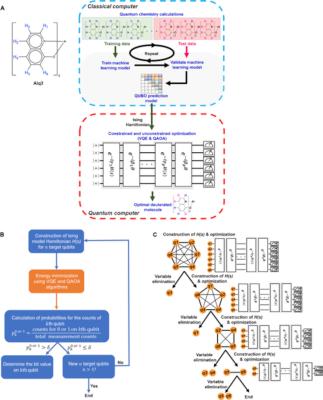Researchers from Japan's Keio University, in collaboration with Mitsubishi Chemical Corporation, developed a new method to accelerate the design of OLED materials, using a combination of classical computing with quantum computing.
The new approach combines a 'classic' machine learning model with a quantum-classical computational molecular design. Demonstrating the new approach, the researchers discovered a highly efficient OLED emitter, a deuterated derivative of Alq3. The new emitter is not only highly efficient, it is also easy to synthesize.
The researchers developed a workflow that starts with quantum chemistry calculations, performed on a classical computer. This was used to obtain the "quantum efficiencies" of a set of deuterated Alq3 molecules. The information obtained is used to create training and test datasets for building a machine learning model to predict the quantum efficiencies of the different molecules.
The machine learning model is used to construct an Hamiltonian energy function of the system. Quantum optimization is then performed on a quantum computer using two quantum variational optimization algorithms—the variational quantum eigensolver (VQE) and the quantum approximate optimization algorithm (QAQA)—to aid machine learning to discover molecules with optimal quantum efficiencies. A synthetic constraint is introduced during the quantum optimization process to ensure that the optimized molecule is synthesizable.
The researchers adopted a noise-robust technique called recursive probabilistic variable elimination (RPVE), to improve the accuracy of the prediction on quantum devices.


